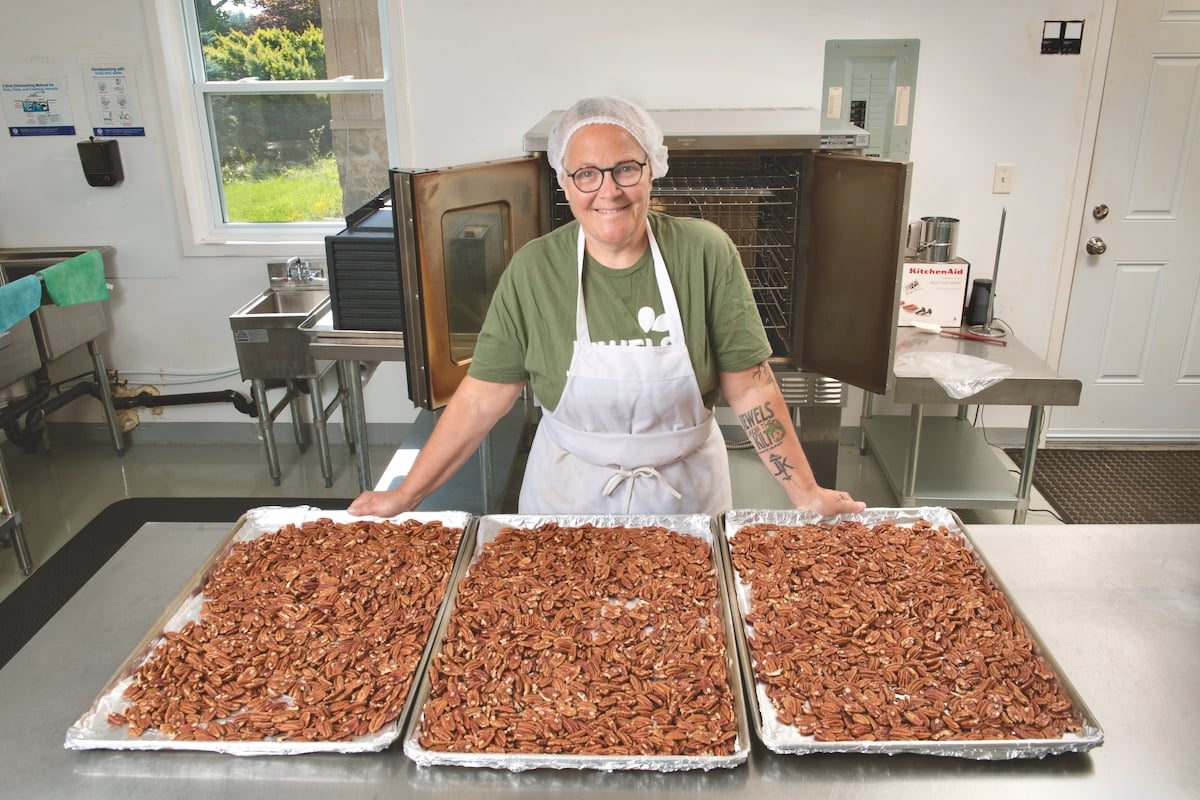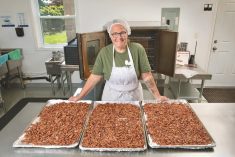In November, our farm ordered a
few bags of pre-inoculated soybean
seed to try. Harold, our local seed
dealer, said the long-lasting pre-coated
inoculation is new this year. What is this
stuff and is it worth the extra cost?
If you re one of the 60 per cent of
Ontario soybean growers who inoculated
your beans last year, you most
likely mixed the liquid on the seed
immediately before planting.
Read Also

Ontario nut farmer builds her business on hidden talent
Ontario nut farmer finds hidden talent and passion for helping others thrive.
Inoculation on soil that has not
grown soybeans is essential for higher
yields, says Dave Hume, professor emeritus
at the University of Guelph and a
consultant with Agri-Trend Agrology.
It makes sense then that inoculant is
used more in eastern Ontario and
Quebec, compared to southern Ontario.
In Manitoba, growers will be pushing
their soybean acreage again in 2009,
says Chris Meier of EMD. Some of the
growers in Manitoba even double inoculate,
Meier says. They use a granular
in their air seeder and also mix a peat or
a liquid with the seed.
As soybean prices rose, payback for
inoculation improved, even on soils that
had grown soybeans before. Long-term
trials indicate a yield increase of 0.75 to
1.0 bu./ac. when inoculating soybeans
planted into fields that have previously
grown well-nodulated crops.
Pre-inoculants now have the same
efficacy as on-farm products, says
Bohner. They work well. Hume agrees.
On new soybean soil, the pre-inoculated
seed performed just as well as regular
self-applied.
Quebec and eastern Ontario use
the most pre-inoculant in Canada.
Often on mixed farms, these growers
are willing to pay for the convenience
of pre-treatment.
Two types of pre-inoculants are now
available a long-lasting polymer
coated and a shorter-lasting with food-based
extender. EMD sells a 30-day preinoculant
and, Becker Underwood is
introducing a plastic-covered pre-inoculant.
Becker Underwood reformulated
HiStick to have a shelf life of 225 days,
if no chemical seed treatment is added.
When other chemicals are added livability
of the rhizobium is 90 to 120 days.
The secret is in the polymer coating,
says Hume. The space-age plastic covers
the rhizobium but allows it to breathe and














